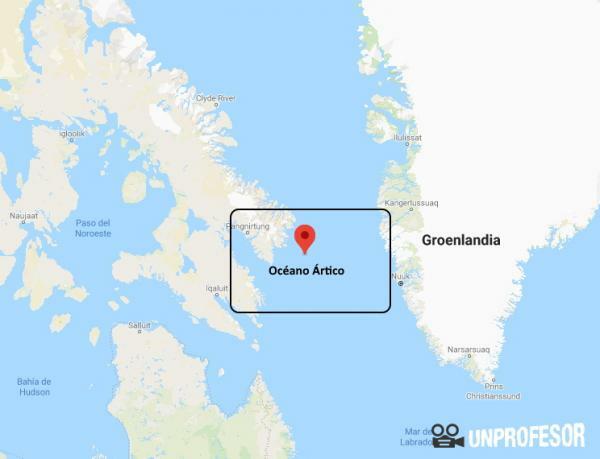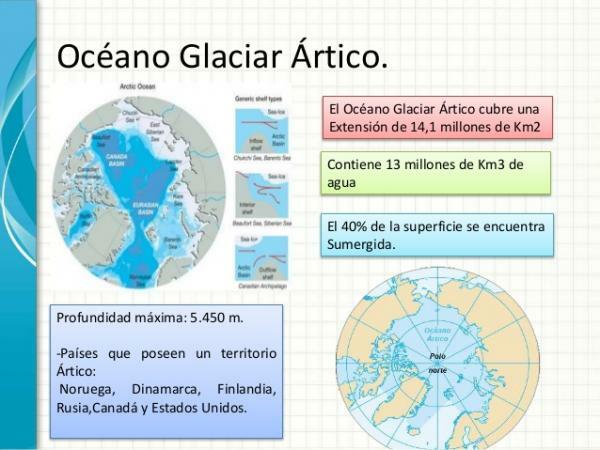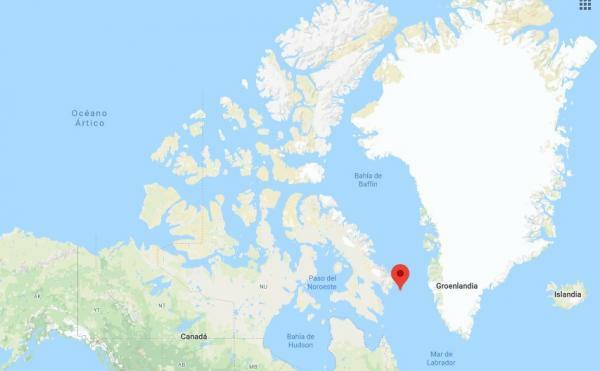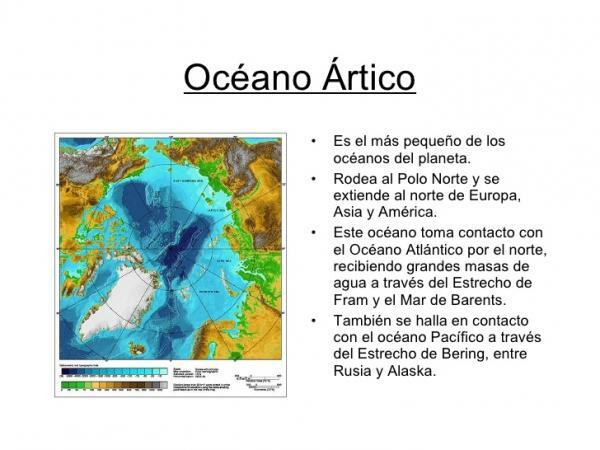ARCTIC Ocean: location and characteristics

All the bodies of water on our planet are of great relevance, whether they are small or giant, they all contribute to the important map of waters that exists on our planet. To talk about one of the smaller oceans and understand its relevance even so, in this lesson from a TEACHER we are going to talk about the Arctic Ocean location and its characteristics.
Before starting to talk about the location and characteristics of the Arctic Ocean, we must comment on its history, since it is Through the knowledge of this we can understand the relevance that this body of water has had in the history of the humanity.
Life in this part of the world is thought to have started around 50,000 years ago, being when the first settlers were located in the area, being during the call Wisconsin glaciation. The glaciation allowed a drop in sea level, directly causing a bridge that allowed humans to pass to the area.
For centuries there were many cultures that inhabited this area of our planet, some of the most relevant being the
Eskimo groups called Thule and Saqqaq. These groups are the predecessors of the so-called Inuit, being a very well-known Eskimo group today, and possibly the one with the greatest relevance in our culture.It was not until mid 19th century Europeans began to be interested in this ocean, sending numerous expeditions and this area gaining more and more importance. Its greatest importance was such that small confrontations occurred in its waters in some of the most important wars of contemporary times.

Image: Slideshare
The Arctic Ocean or Arctic Glacial Ocean is the smallest and northernmost ocean of our entire planet. Its location is that of a central point between Europe, Asia and North America, being north of what we call the Arctic Circle.
To better understand its location, it is interesting to talk about its limits, in order to understand how far its waters reach through territorial examples. The Arctic borders the northern part of the Atlantic Ocean, is separated from the Pacific Ocean by the so-called Bering Strait, and also borders on the other side with Europe and Asia. It is surrounded by the land masses of Europe, Asia, Greenland, and numerous small islands in the area. As for the countries that border its coasts we find Russia, Norway, Denmark, Iceland, Canada and the United States.
On the other hand, as with the rest of the oceans we can find numerous seasinside, being some of great relevance. These seas are:
- The Barents Sea
- The Beaufort Sea
- The Chukotka Sea
- The East Siberian Sea
- The Greenland Sea
- The sea of Kara
- Laptev Sea
- The white sea
- The Labrador Sea
On the other hand, its extension also includes Baffin Bay, Hudson Strait and Hudson Bay.

To continue with this lesson on the location and characteristics of the Arctic Ocean we must talk on the different peculiarities of this great body of water, since its position makes it very special. The main Arctic Ocean features are as follows:
- It's the ocean of the world smaller, since even during a time it was considered that it comprised of other larger oceans.
- Its position makes it the ocean northernmost of everyone on the planet.
- Its extension is about 14056000 km2
- It has a depth that is between 2000 and 4000 meters in the so-called central zone, and only about 100 meters in the part closest to the continents. It could be said in general that it has an average depth of 1200 meters below sea level.
- The Arctic is characterized by having a large part of its surface large ice masses, being especially common in the central area where we find several meters of ice thickness.
- Your position, near very cold areas As for example Siberia, it causes its temperatures to reach -50º C in winter and in summer around 0º C.
- Winters cause a great darkness in the area, it seems that there is no light for the effect. This has led many visitors to talk that it is a sad area.
- On the other hand, in summer it becomes a always luminous sky, although snowfalls so little seen in the southernmost area are excessively common.
- There are hundreds of animal species in the area, most of them species that are capable of surviving the harsh cold climate. Some of these species that are no less common in other parts of the world are the polar bears, seals, krill, walruses or even huge whales.
- For years the villagers have been economically dedicated to The hunt, being essential for them to obtain whales and seals, from which they obtained highly valued products. All this has led to fewer and fewer animal species in the area.
- It is one of the areas most concerned about the problems of environment, since these affect the ice caps in the area. It is thought to be one of the parts of the planet that will suffer the most from the hole in the ozone layer in the coming years.
- The area has oil and natural gas, being the reason why many western states have been interested in the area.

Image: Slideshares



